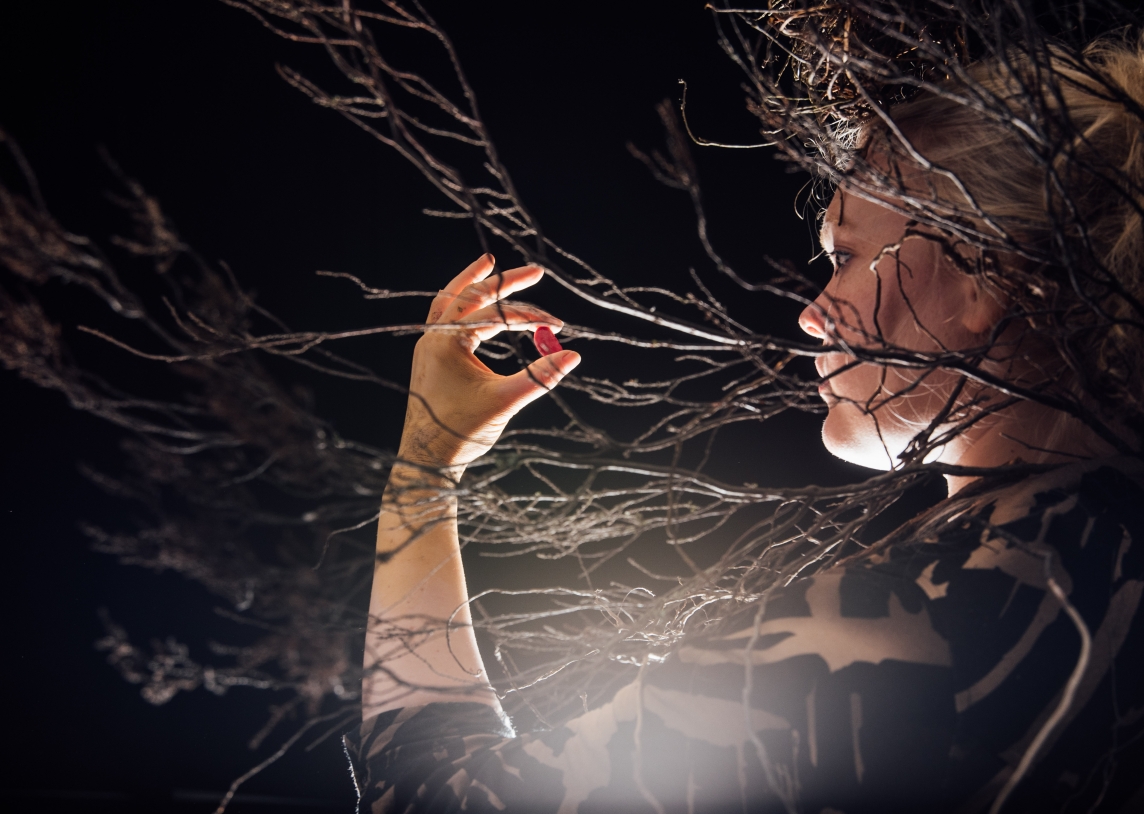News
Before Thumbelina at Manipulate: Interrogating Futures
Before Thumbelina at Manipulate: Interrogating Futures
by Lorna Irvine
Incorporating puppetry, storytelling and rich visuals, Before Thumbelina is a unique, beautiful spin on the Hans Christian Andersen tale, but from an adult perspective. Lorna Irvine caught up with the show's creator and performer, Anna Nekrassova.
Lorna Irvine: Please tell me more about the piece and what the audience can expect.
Anna Nekrassova: Before Thumbelina is a visually stunning puppet and object theatre solo. It draws inspiration from the beginning of H.C. Andersen's renowned story Thumbelina. The children's tale does not elaborate what happened before we got to the actual Thumbelina's story, so this performance concentrates on her mother's journey.
It is a story about struggles, dreams, fears, health and infertility. For example, a person with gynaecological conditions like PCOS (Polycystic ovarian syndrome) or Endometriosis can find something to relate to. At the same time, I feel that this story has multiple layers, which gives the spectator a certain freedom to read their own theme and story from the performance.
I've been told that it resonates with different aspects of life, according to individual experiences and the moment you are in, and it changes each time - even for me. It is an emotional, sensitive, empowering and at the same time playful piece.
LI: How do you approach your work when starting out? Do you begin from a theme, or do you have an image or piece of text?
AN: It depends on the performance I am working on. Sometimes it's text, sometimes just an idea, object or an image. It's always a different path with each piece. For example, with Before Thumbelina I started with an image I created: a woman with different sizes of flowerpots. In my mind it immediately connected to Thumbelina. Already as a child I wanted to know more about the mother in the story and so I saw an opportunity to tell about her, although it took me years to actually start working on this idea. Over the years I knew that I wanted make a piece out of it for adults and for the theme I didn't have to go far. For me it is in the story and, well, it was the year 2020, so many struggles were in the air. As a performer, I desperately needed to create something of my own.
LI: What were the challenges in adapting such a well-known work as Thumbelina?
AN: I wouldn't say that I actually had any challenges, maybe because I kind of created my own story. A bigger challenge may have come after because the original Thumbelina is a children's story. So how to be clear that this is a piece for adults? That's why it is underlined at the beginning of the performance's official introduction that it is "an everyday story for adults" and also the age limit is helpful here.
LI. Do you think that performance is an effective way of tackling complex issues?
AN: Yes, I would say so. Because of the metaphorical layers which in this case objects offer. We can talk about very difficult and painful things and at the same time, it's just a woman trying to plant a flower. It gives a kind of a distance which could be needed but at the same time leaves space for spectators' own feelings. Or you can also read the layer that there is just a woman struggling to plant a flower and it is one way to look at it as well.
This publication is written in the context of the project "European Contemporary Puppetry Critical Platform"

